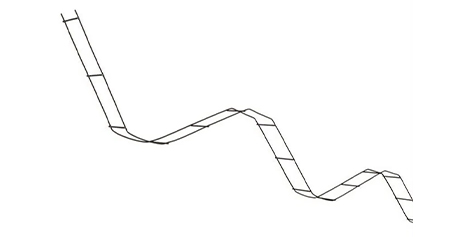
- Mobile Phone
- +8613931874955
- sales@cntcmetal.com
cavity tie spacing
Understanding Cavity Tie Spacing in Construction
In construction, ensuring the integrity and stability of structures, especially those involving concrete walls or panels, is crucial. One of the key components in achieving this is the proper spacing of cavity ties. Cavity ties play a significant role in holding together the outer and inner leaves of cavity walls, which provide not only structural support but also insulation and moisture control. This article delves into the importance of cavity tie spacing, factors influencing it, and guidelines for best practices.
Cavity ties are typically made from materials such as stainless steel or galvanized steel, designed to withstand corrosion and contribute to the long-term durability of the structure. The spacing of these ties is critical; it affects both the structural performance of the wall and its ability to resist lateral forces, such as wind pressure. According to building codes and standards, the recommended spacing usually ranges from 600mm to 900mm apart vertically, depending on various factors like the wall height, type of materials used, and environmental conditions.
One of the primary considerations when determining cavity tie spacing is the type of cavity wall being constructed. For example, in masonry cavity walls, ties need to be closer together if the wall is tall or if it faces significant wind loads. On the other hand, for shorter walls or those in more sheltered locations, wider spacing may be acceptable. It is important to consult relevant building guidelines or a structural engineer to ensure compliance with local codes.
cavity tie spacing

Moisture control is another crucial factor influencing cavity tie spacing. Proper spacing helps to minimize the risk of moisture accumulation within the cavity. When ties are too far apart, there is an increased chance of water ingress, which can lead to corrosion of the ties and detrimental impacts on the wall's structure. Therefore, maintaining an optimal distance while ensuring adequate drainage and ventilation within the cavity is vital for preserving the structural integrity of the wall.
In practice, ensuring that cavity ties are correctly spaced requires meticulous planning and consideration. During the design phase, architects and engineers should clearly define the specifications for tie placement. Workers must then adhere to these specifications during construction, using appropriate tools and equipment to install the ties accurately. Regular inspections throughout the construction process are essential to verifying that the ties are positioned correctly and securely.
In conclusion, cavity tie spacing is a critical aspect of cavity wall construction that significantly influences the overall stability and longevity of the structure. A well-planned spacing strategy not only reinforces the mechanical integrity of the wall but also mitigates moisture-related issues, ensuring a healthy environment within the structure. By adhering to established guidelines and recognizing the importance of this detail, construction professionals can contribute to the creation of safe, durable buildings that stand the test of time.
share:
-
Yard Sign Stakes: Reliable Guardians of Outdoor SignsNewsAug.04,2025
-
Wall Ties: Invisible Guardians of Building StabilityNewsAug.04,2025
-
Resilient Web: The Super Guardian Power of Concrete MeshNewsAug.04,2025
-
Masonry Accessories: A versatile assistant on building foundationsNewsAug.04,2025
-
Iron Binding Wire: the 'invisible reinforcement specialist' in the fields of architecture and industryNewsAug.04,2025
-
Dynamic Spring: The diverse functions and excellent performance of Wire Tension SpringNewsAug.04,2025
-
Your Source for Concrete Wall Ties and Masonry AccessoriesNewsJul.10,2025



















